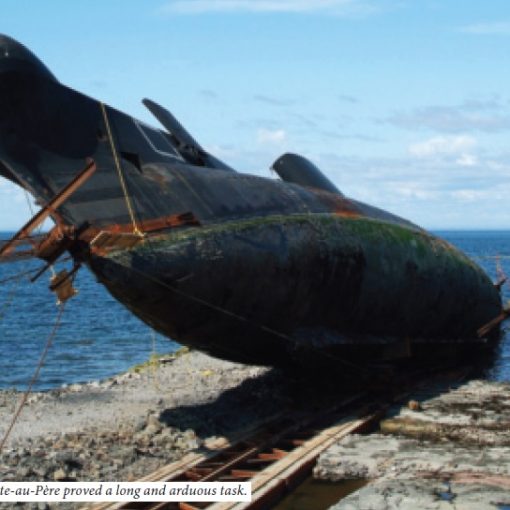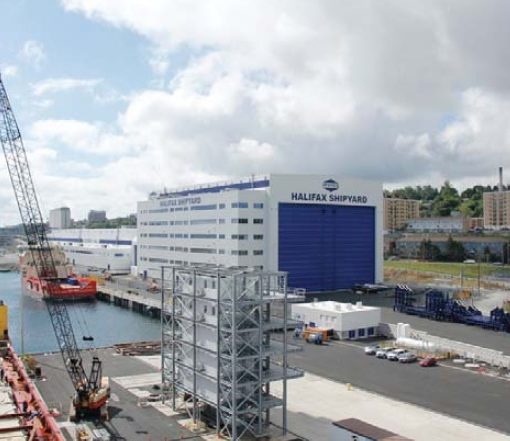Certain Canadian politicians and labour leaders have been making a fuss recently over the idea that Canada might build a new class of warships to a British design - as though that was a bad thing. As pointed out by Peter Haydon in his recent Broadsides Forum, this practice of relying on offshore design expertise is nothing new and has been made necessary by the “boom or bust” practice of building new ships in this country.
It is interesting to examine practices among our NATO allies: in the 1960s the Dutch Government was concerned about the lack of work for their shipbuilding firms and the retention of the capability to build warships. They decided to build a new class of frigates to keep the shipyards busy and, in order to expedite the process, adopted the well-proven Leander-class design. These Van Speijk-class frigates (now in the Indonesian Navy) incorporated many improvements to the basic design and all six were completed within a total of four years. Several decades later in the UK, the Type 23 Frigates were designed to serve for 18 years and, rather than undergo a costly mid-life refit, were to be sold and replaced by new construction. That idea has been overtaken by harsh economic times and now these vessels must remain in commission for as much as 36 years! Contributing to the earlier decision may have been the intent - by government - to thus build more ships to keep shipyards and their workers busy.
For many years the construction of major warships, i.e. frigates or larger, has had an international flavour. Only the very largest navies “go it alone” – and even then innovations and equipments from other countries are adopted or purchased in order to build the most effective vessel possible to meet operational requirements and funding constraints. Some well-conceived national designs have been copied or purchased second-hand when opportunity permitted. An example was the Dutch Standard frigate.
The Dutch developed the Kortenaer-class, known as the “Standard Frigate” because it met agreed NATO Standards. Two of these very successful ships were sold to Greece on completion in the early ‘80s, and the remainder of the class were eventually purchased by Greece in the 1990s and early 2000s when they were paid off from Dutch service. A further two air defence variants were completed for the Netherlands and sold to Chile with the down-sizing of the Dutch surface fleet several years ago. Eight modified Kortenaers were constructed in Germany and remain in service as the Bremen-class: all of these frigates are considered very successful general purpose vessels and should continue to serve their current navies for years to come.
One of the most interesting multi-national frigate programmes was NFR-90. The program was established by a 1988 memorandum of understanding for the project definition phase of a NATO frigate replacement for the 1990s (NFR-90). The ultimate configuration of the projected ship and its capabilities were the subject of extensive study and debate. It was intended to be “stealthy” with a shaped superstructure to deflect radar pulses and incorporate radar absorbent materials, advanced degaussing, and isolation mounting of engines and auxiliaries to reduce electromagnetic, radar cross-section and acoustic signatures. The ship was also intended to include modular sensors and weapons so that each ship could be readily reconfigured for specific missions or threats.
The eight countries participating in this project were Canada, France, Germany, Italy, the Netherlands, Spain, the United Kingdom, and the United States. A first-of-class ship was to be built to prove the design, but individual nations would have built their own vessels to a common design, however with the flexibility to modify the combat equipment fit. The aim was to realize sufficient commonality of equipment across the program to achieve economies of scale in procuring propulsion and combat systems.
Although this ambitious project ultimately failed due to the dissatisfaction of the major participants with some of the details of the projected vessel, an improved attitude to multi-national naval cooperation was achieved. For example, the French, British and Italians collaborated in the HORIZON Program in order to meet their objectives of substantial savings. The UK vessels evolved into the Type 45 Daring-class destroyers and the French and Italian Navies have two Horizon-class destroyers each, with all three countries sharing in the development of the EUROPAAMS (EURO Principal Anti Air Missile System), SAMSON Radar, and ASTOR 15 and 30 Surface to Air Missiles. Similarly the Netherlands, Spain, and Germany combined their frigate programs in the Trilateral Frigate Program to achieve cost reductions through the development of common components and subsystems, all being fitted with their main armament – the very effective US Standard II area air defence missile system. A variant of this design is currently being built in Spain for Norway - the Nansen-class frigates.
The British government has discussed with Canadian officials the possibility of collaborating on a new frigate program, a project in which Australia, Brazil, Malaysia, New Zealand and Turkey have also shown interest. Building a new frigate is a very long-lead venture, with the first ships likely not being operational before the early-2020s. This “Global Combat Ship”or Type 26 frigate, is destined to replace Type 23 frigates in Royal Navy service by the start of the next decade. BAE Systems has been working on a 127 million-pound ($202 million) assessment phase to provide a warship capable of supporting land operations and conducting other roles, such as anti-submarine warfare. Initial studies for this ship include features such as an aft “mission bay” for swappable payloads, a key feature of the American Littoral Combat Ship. Key design criteria include multi-role versatility, flexibility in adapting to future needs, and affordability in both construction and through-life support costs.
It is likely that British shipbuilders and naval architects hope to benefit from this project, and it is likely that some nations would place orders in the UK for such ships. British shipyards have built surface combatants for many other nations, Canadian warships built to this design will be built in Canada, as indeed have all of our frigates and destroyers since the Second World War. There may be some cost in joining this project, but certainly such expenditures would be less than trying to design our own vessels. We would have to hire skilled people from outside Canada in any case if we wished to design our ‘own’ ship, so surely it makes sense to call upon design expertise wherever we can find it, and make good use of the collaborative lessons-learned from past decades, to ensure that the core of our next navy – the replacement for our current Canadian Patrol Frigate - is cost effective and successful right out of the box.



